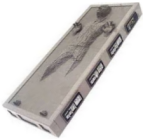Difference between revisions of "Console Command Reference"
From Free Knowledge Base- The DUCK Project: information for everyone
m |
|||
| Line 126: | Line 126: | ||
<nowiki></nowiki> | <nowiki></nowiki> | ||
printenv - show environment variables | printenv - show environment variables | ||
| + | |||
| + | == Related Pages == | ||
| + | If what you're looking for isn't on this page, try some of these related pages: | ||
| + | * [[Advanced Shell Operations]] | ||
| + | * [[Console Command Reference]] | ||
| + | * [[How Do I: A Linux Q&A]] | ||
| + | |||
| + | {{:Template:Archived Entry}} | ||
[[Category:Computer_Technology]] | [[Category:Computer_Technology]] | ||
[[Category:Linux]] | [[Category:Linux]] | ||
Revision as of 12:48, 29 January 2018
[ Basic Command Reference for UNIX/Linux ]
_________________________________________________________________________________________________
Linux/UNIX command Description MS-DOS equivalent
-------------------- -------------------- --------------------
./{application} start {application} in current dir. {application}
{up arrow / down arrow} previous / next command in buffer doskey
cd {directory} go to directory {directory} cd
cd .. (or cd ../ or cd /..) go down one directory cd..
{string} [tab] [tab] view all commands starting with {string}
adduser add a user to the system
ls list a directory dir
cat {filename} view a textfile on the terminal type
mv {filename} {newname} move or rename file move
cp {filename} {filepath} copy file copy
rm {filename} delete a file del
mkdir {directory} make a directory md
rmdir {directory} remove a directory rd
rm -r {directory} remove directory and all underlying files deltree
rm p remove a package
df Show free space on device chkdsk
top view memory status (q to quit) mem
man {command} get a manual page about these commands help
less {filename} enhanced text file view
echo print something on the screen echo
mc Norton Commander for UNIX nc
mount to couple a device (cdrom) (floppy)
umount to uncouple a device
shutdown -h now to shutdown (same as the shutdown on windows start menu)
shutdown -r now to shutdown and reboot the system
[ Advanced commands ]
_________________________________________________________________________________________________
chmod {permissions} {file} Change file permissions
ls -l x Perform a detailed directory listing for file x
ln -s x y Make a symbolic link from x to y
find x -name y -print find file y, begin the search from within directory x and
print the results to the screen
ps to view all running processes
kill x to terminate process x (x is PID from ps)
[alt] + F1 - F7 switch to terminal 1 - 7 (in text terminal; F7 = X-Windows
(when started))
lilo to make a boot disk
[ Additional Advanced commands ]
_________________________________________________________________________________________________
dmesg print kernel buffer, useful to review boot messages
[ Derek's General Linux Quick Command Reference with examples ]
_________________________________________________________________________________________________
*-----[access removable drives]-----*
cdrom mount -> mount /dev/cdrom /mnt/cdrom
cdrom unmount -> umount /dev/cdrom
floppy mount -> mount /dev/fd0 /mnt/floppy
floppy unmount -> umount /dev/fd0
*-----[logging on and off]-----*
shutdown -h now (to completely shutdown system
startx -- -bpp 15 (load XF86 in high colour)
15= 32768, 16 bpp= 65536, 24 or 32 bpp,= 16.7 mil colors
*-----[connect to inet with minicom]-----*
minicom -s
cntrl-A + D , (add phonenumber if necessary)
connect , after the *%^*)*^%58^%&%(*^&%$^&*(*&(^%
cntrl-A + Q and choose "Quit without Reset"
at the prompt type: pppd defaultroute /dev/modem
*-----[install software and components]-----*
RPM -> rpm -i --percent filename.rpm
tar xvf filename.tar -> untar
gzip -dfvr -> un-gzip
*-----[hotkeys and multitask]-----*
Alt-F1 through F6 -> switches consoles
Ctrl-Alt-F1-F2 to 6 -> switch from X to console
Alt-F7 -> switch from console back to X
*-----[miscellaneous]-----*
ping -i 300 host.domain.com /dev/null -> ping bot
ping -i 300 host.domain.com }/dev/null & -> better
ps -u username -> show my processes on SunOS Unix
route -h -> show network info and ip's
*-----[console keystrokes]-----*
vi -> vi filename (powerful text editor)
pico -> pico filename (edit a text file)
SHIFT-PGUP -> in colsole to scroll up
ls | less -> does directory in scrollable format
ls -l | less -> above with file sizes
pico filename -> create batch program
chmod +x filename -> set executable file permission
ln -s realdir fakedir -> create link to directory
pwd -> shows working directory
*-----[technicial]-----*
modprobe -> added kernel module
modprobe ne.o -> with parameters to add netcard
*-----[recompile kernel]-----*
uname -r -> display current kernel version
/usr/src/linux
make config or make menuconfig
[ Terminology ]
_________________________________________________________________________________________________
symlink Symbolic link to another file or directory. Like Win95's shortcuts
shell script Like MS-DOS's batchfiles; perform a series of commands after another.
[ X-Windows ]
_________________________________________________________________________________________________
startx to start X-windows
[ctrl] + [alt] + [backsp] to quit X during trouble
[ctrl] + [alt] + F1 - F6 to switch to text terminal 1 - 6 (in X-windows)
xf86Config most primitive setup/configurator for x (in text terminal)
Xconfigurator another configurator for X in text terminal
xf86Setup an X-Windows configurator for X
configX to configure Metro-X server
_________________________________________________________________________________________________
printenv - show environment variables
Related Pages
If what you're looking for isn't on this page, try some of these related pages:
- Advanced Shell Operations
- Console Command Reference
- How Do I: A Linux Q&A
| Carbonite Page: This page is an archived entry and should not be modified. Information on this page may be out of date, however, still useful. An example is data for legacy systems or outdated technologies that are still being used by some, such as Vacuum Tube bogey values, analog broadcast television frequencies or MS-DOS 6.22 commands. Although outdated, this information will not change or evolve any further. Certain archived pages on the D.U.C.K. Wiki have been imported from our older ANSI BBS system and other storage mediums previously used. These pages are kept unmodified for archival purposes. |
